Card games have been a popular form of entertainment and bonding for kids and adults throughout history. They are not only a great way to spend time with friends and family, but also help in developing critical thinking, memory, and social skills. The following listicle highlights some of the best card games for kids that can be enjoyed by players of all ages and provide hours of fun and laughter.
Go Fish
Card games are a fantastic way to entertain children while also helping them develop important cognitive skills. One of the best card games for kids is the timeless classic, Go Fish. The simplicity of this game, combined with the friendly and competitive interaction between players, makes it a perfect choice for children of all ages. So, take a dive into the world of Go Fish and learn how to play, valuable gameplay tips, and the educational benefits of this popular card game.
How to Play Go Fish
Go Fish is played with a standard deck of 52 cards, and the game is suitable for 2-6 players, making it perfect for both family game nights and playdates with friends.
Objective – The objective of Go Fish is to collect sets of four matching cards by asking other players for the cards you need.
Setup – To start, shuffle the cards and deal the following cards face-down to each player, according to the number of players:
- 2-3 players: 7 cards each
- 4-6 players: 5 cards each
The remaining cards are placed face-down in the middle of the table as a draw pile, known as the ‘ocean.’
Gameplay – The player to the left of the dealer goes first, asking any opponent for a specific rank card (e.g., “Do you have any kings?”). If the opponent has that card, they must give it to the player who asked. This player then continues their turn by asking for another card.
However, if the opponent does not have the requested card, they respond with “Go Fish!” The asker then draws a card from the draw pile. If the drawn card is the one requested, they get a free turn. Otherwise, the turn passes to the next player clockwise.
Set Creation – Once a player collects a set of four matching cards, they must lay them down on the table face-up. The game continues until there are no more cards left in the draw pile or when one player has no more cards.
Scoring – At the end of the game, the player with the most sets of four matching cards wins!
Tips and Strategy
- Keep track of the cards opponents ask for and what they draw, it’ll help you deduce their cards.
- Ask for cards you already have, as it increases the chances of forming sets.
- Be mindful of your turn; use the “free turn” when you draw the requested card to your advantage.
Educational Benefits of Go Fish
- Memory and Concentration – Players must remember which cards their opponents possess to maximize their chances of forming sets.
- Strategic Thinking – Deciding which cards to ask for and when requires children to think critically and anticipate opponents’ actions.
- Social Interaction – The game encourages conversations and friendly competition, teaching sportsmanship and cooperation.
Conclusion
Go Fish is undoubtedly one of the best card games for children. Its simplicity and engaging gameplay, combined with the educational benefits, make it a classic choice for kids of all ages. So, grab a deck of cards, gather your little ones, and dive into the exciting world of Go Fish!
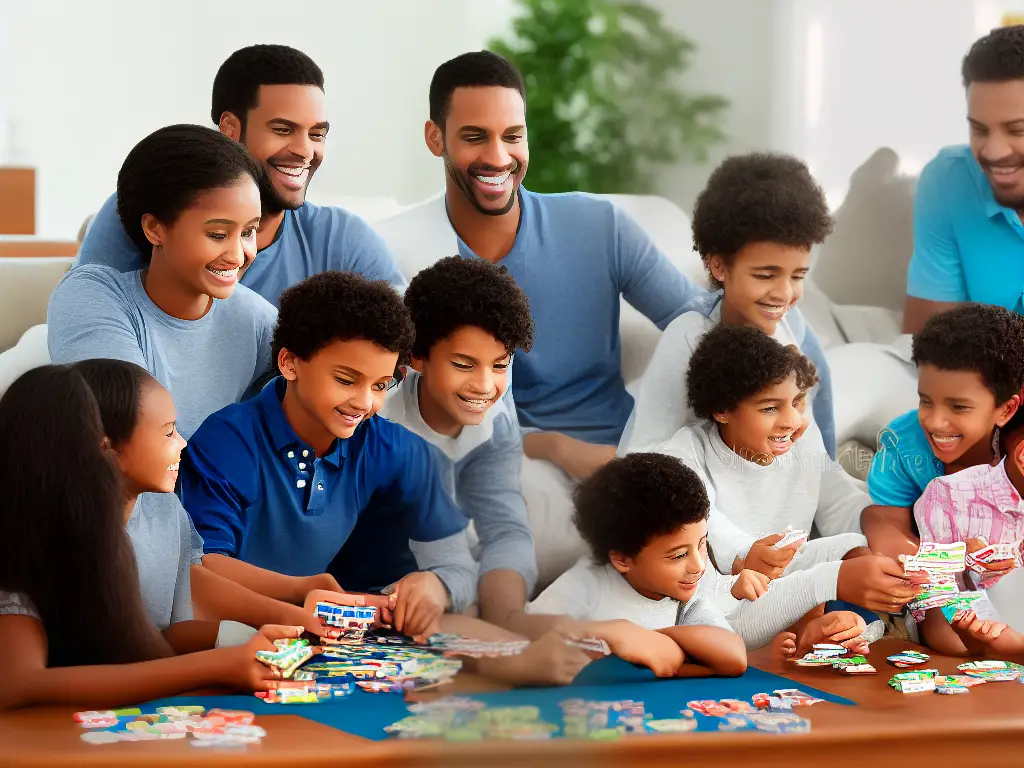
Crazy Eights
Are you looking for a thrilling yet simple card game for your kids that not only guarantees fun but also sharpens their cognitive abilities? Look no further! Let us introduce you to the exciting world of Crazy Eights, an all-time favorite card game that promises a perfect mix of entertainment, challenge, and learning for your little ones.
Crazy Eights is an easy-to-learn, captivating card game that has remained popular amongst kids and adults alike for generations. All you need is a standard deck of cards and at least two players to begin this addictive battle of wits!
How to Play Crazy Eights:
- Shuffle the deck and deal an equal number of cards to each player (usually 5-7 cards). The remaining cards form the draw pile, face down in the center of the table.
- Turn over the top card from the draw pile to reveal the “discard pile.” This card will determine the opening direction of the gameplay.
- The player to the left of the dealer begins the game by discarding a card from their hand that matches either the suit or rank (number) of the top card on the discard pile. For example, if the top card is a 5 of hearts, the player can discard a 5 of a different suit or a heart of a different number.
- In case a player cannot discard a suitable card, they must draw cards from the draw pile until they pick up a matching card or the draw pile runs out.
- The magic lies in the eights! If a player discards an eight, they can declare a new suit, and the next player must follow the newly declared suit.
- The first player to run out of cards wins! If the draw pile runs out before one of the players, the player with the least number of cards left in hand emerges victorious.
Customizing Crazy Eights for Kids:
- For younger kids, use decks with fewer suits and refreshingly vibrant images to help maintain their interest in the game.
- Limit the number of cards dealt per player for shorter game durations and easier management for little ones.
- Introduce fun variations such as Crazy Eights Countdown, where players start with a specific point value (like 50) and lose points based on the number of cards left in their hand at the end of each round. The first person to reach zero points wins!
In conclusion, Crazy Eights is the ideal card game for kids that introduces them to the exciting realm of strategy, decision-making, and healthy competition, all while having an absolute blast. So, gather around the table, shuffle the cards, and let your budding card sharks go “Crazy” with Crazy Eights!
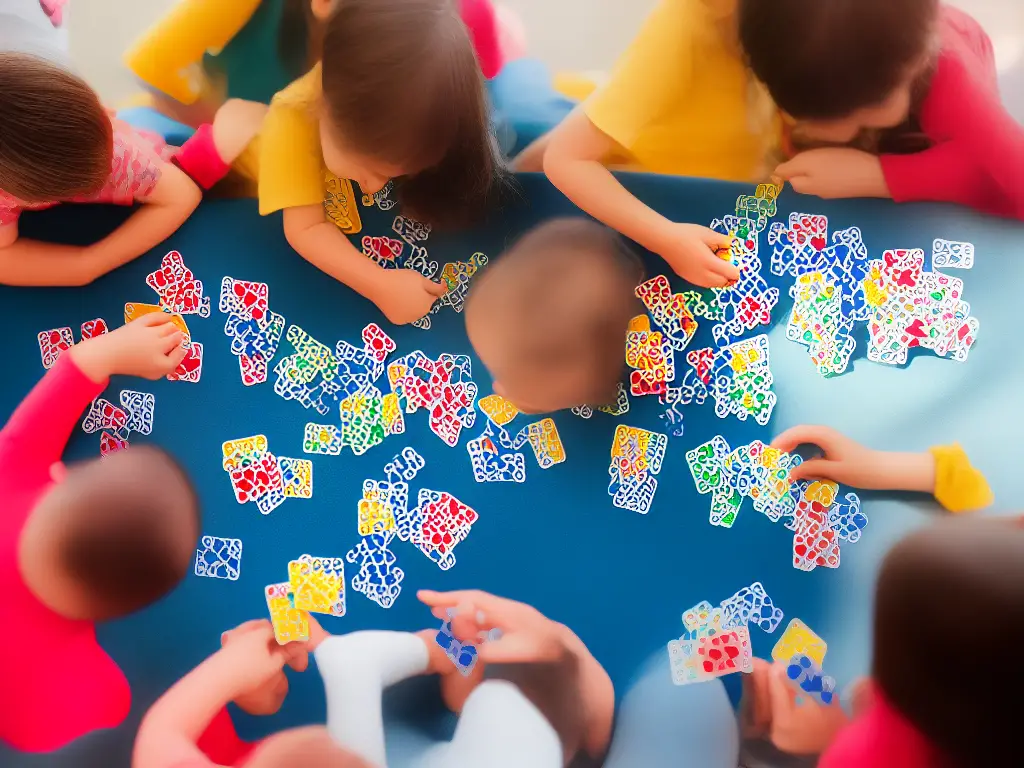
Memory
Are you looking for a fun and engaging way to help your child develop their memory and concentration skills? Look no further! Memory, also known as Concentration, is a classic card game that has been played and loved by generations of kids and adults alike. It’s not only enjoyable but also challenging enough to sharpen your little one’s cognitive abilities.
How to Play Memory
Memory is an easy-to-play game and requires only a standard deck of cards. To begin, lay the cards face-down in a grid pattern. The objective of the game is to find as many matching pairs as possible. Here’s how you can play:
- Each player takes turns flipping over two cards.
- If the flipped cards are a matching pair (e.g., two Queens, two 3s, etc.), the player keeps the cards and gets another turn.
- If the cards are not a match, they are flipped back to their face-down position, and the turn passes to the next player.
- The game ends when all pairs have been discovered.
- The player with the most pairs at the end of the game wins!
Improving Memory Skills
Memory is much more than a simple pastime; it can actively contribute to your child’s cognitive development. Here’s how:
- Encourages focus and concentration: To successfully find pairs in Memory, kids need to pay close attention to the locations of different cards. They will gradually learn to focus and avoid distractions, which are essential skills for learning and concentration.
- Enhances memory retention: Memory pushes children to remember the position of previously seen cards to find pairs quickly. This constant retrieval process exercises their short-term memory, helping them develop better memory recall.
- Builds pattern recognition: As children continuously play Memory, they start to recognize patterns more easily, such as the arrangement of the grid or strategies to remember card locations. This skill is beneficial in various learning situations, including mathematics, problem-solving, and reading.
- Promotes social interaction: Memory is a fun and competitive game that encourages kids to interact with their family and friends while playing. Social interactions help them develop communication, cooperation, and problem-solving skills.
Adapting Memory for Different Ages
One of the best things about Memory is its adaptability. You can easily modify the game to suit your child’s age and abilities. For example:
- For younger children, simplify the game by using a smaller grid and fewer card types (e.g., only number cards).
- Increase the difficulty for older kids by enlarging the grid, using the entire deck or including multiple decks.
- Introduce themed cards to engage kids with different interests or use picture cards to encourage language development for younger players.
Memory is an all-time favorite that has stood the test of time, and for good reason. This simple card game strengthens your child’s memory and concentration skills in a fun, engaging way that encourages social interaction. Try playing a round with your kids today and see the improvements for yourself!
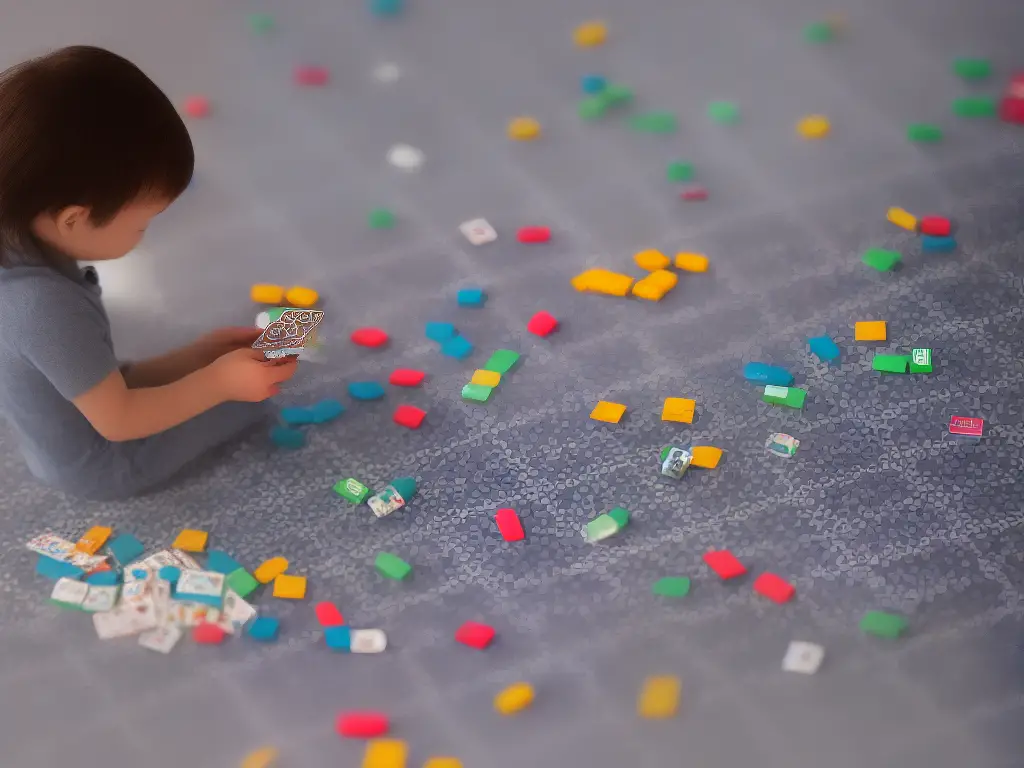
Old Maid
Looking for a perfect card game to keep the little ones entertained? Old Maid is a timeless classic that is easy to learn and simple enough for kids to enjoy. This engaging, fast-paced game will have children of all ages laughing, strategizing, and developing important memory and matching skills. So gather the kids and get ready for some fun!
Old Maid has been a popular card game for children since the 19th century. Originating in Victorian England, it quickly spread across the globe, becoming a treasured pastime and leaving a legacy that brings joy and learning to kids today.
How to Play:
Old Maid can be played with 2-8 players, using a standard deck of cards with one card removed, creating an odd number of total cards – this is the Old Maid. The game begins with shuffling the deck and dealing all the cards out to the players.
Players then check their hand for any matching pairs (two cards of the same rank) and discard them. The fun continues as players take turns drawing one card from their neighbor’s hand, aiming to make a pair and discard it. The game moves clockwise, with players taking turns until all cards have been paired and discarded, leaving just one card – the Old Maid.
The exciting part is that no one knows where the Old Maid card is as players keep drawing and discarding cards. The player holding the Old Maid at the end of the game loses, while the first player to discard all of their cards is the winner. But in this friendly and quick-paced game, everyone will likely have a chance to win and lose, making it great for family game nights.
Benefits for Kids:
Old Maid is more than just fun – it also offers developmental benefits for kids. Here are a few key skills kids will develop while playing Old Maid:
- Memory and Matching: Remembering the cards they’ve seen and matching them up requires concentration and attention to detail, helping kids sharpen their memory and pattern recognition.
- Strategizing and Decision-Making: Players need to decide which card to draw from their neighbor’s hand, considering the risks and possibilities involved.
- Social Skills: With its light-hearted competitiveness and constant interaction, Old Maid fosters a positive atmosphere and encourages good sportsmanship.
- Hand-Eye Coordination: As players quickly draw and discard cards, they naturally improve their fine motor skills.
Old Maid is a delightful card game that is suitable for kids as well as adults. With a simple yet exciting concept, this engaging game never gets old and offers several developmental benefits for kids. So whether at a family gathering or an afternoon playdate, Old Maid is the perfect card game for hours of laughter and learning.
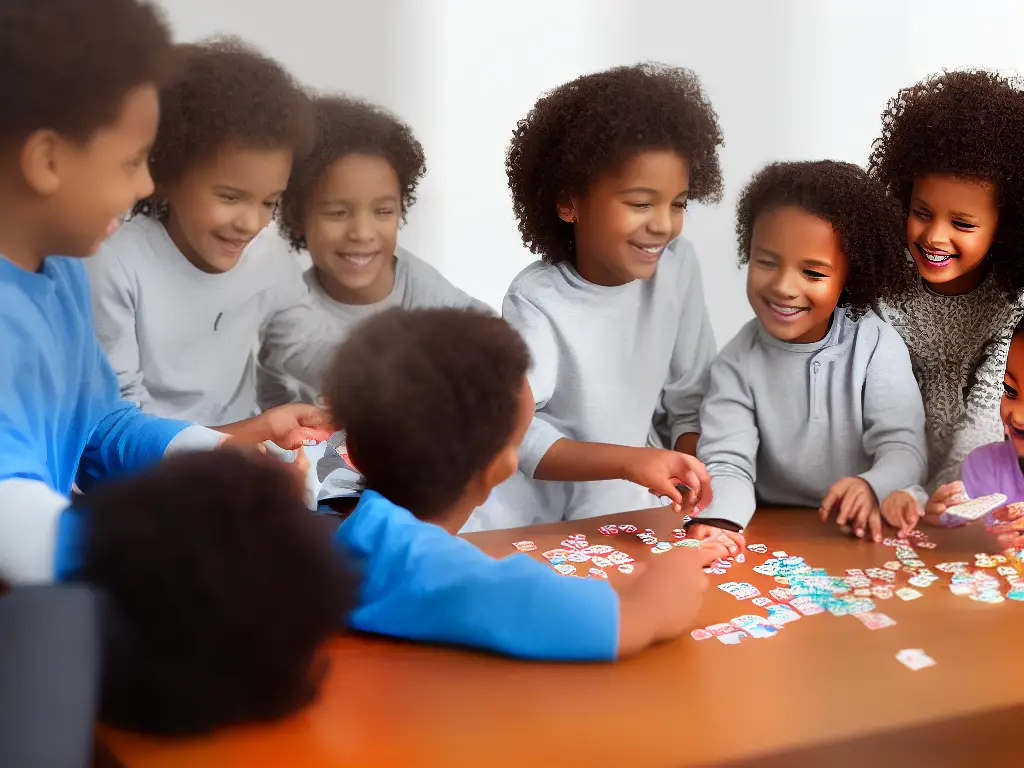
Snap
If you’re looking for a fun, simple, and engaging card game that your kids can pick up in minutes, look no further than Snap! This exciting and fast-paced game is perfect for children of all ages, as well as the entire family. Keep reading to learn more about Snap and why it should be part of your next game night.
Snap: How to Play
To play Snap, all you need is a standard deck of 52 playing cards. Make sure to remove the jokers before you start. The objective of the game is to collect all of the cards.
- Shuffle the deck and deal out the entire deck, face down, to all players. Players should not look at their cards.
- Players hold their stack of cards face down, and they take turns quickly placing the top card of their stack face up in the center of the table, on top of the previously played cards. The game proceeds at a snappy pace, so be ready to jump in when it’s your turn.
- If a card is played that has the same value as the card below it (such as two eights or two kings), the first player to shout “Snap!” wins the entire pile of cards in the center.
- When players run out of their own cards, they sit out the rest of the game. The game continues until one player has collected all of the cards and is declared the winner.
Why Snap is Great for Kids
Snap is not only a fun game, but it also has several benefits for your children:
- It helps develop quick reflexes: Snap can be a fast-paced game of speed and reflexes, which can help your kids develop quick thinking and reaction skills.
- It improves concentration: Players need to stay focused and attentive during the game, which can ultimately help boost concentration levels.
- It teaches number and pattern recognition: Being able to quickly recognize the same card values and match them with other cards is a crucial skill in Snap, which can strengthen your kids’ number and pattern recognition abilities.
- It encourages healthy competition and social interaction: The excitement of quickly calling out “Snap!” when a match is made creates a fun and competitive atmosphere, and it encourages kids to engage in social interactions with other players.
In conclusion, Snap is a fantastic option for kids and families who are looking for an exciting, simple, and addictive card game. By including Snap in your next family game night, you’re not only promising loads of fun and laughter, but also teaching your children valuable skills that they’ll be able to use in their everyday lives. So, shuffle up the deck and start shouting “Snap!” with your family and friends.
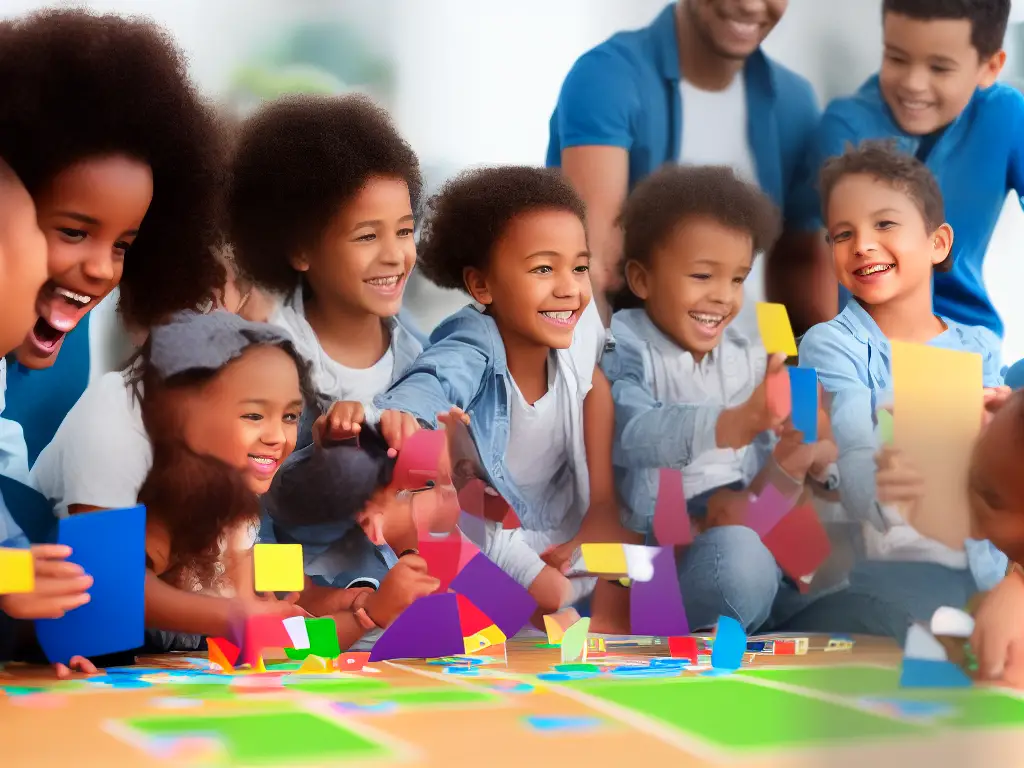
War
Card games might be seen as old-school, but they’re an excellent way for children to pick up essential skills like critical thinking, strategy, and mental math. One classic card game that has stood the test of time, especially when it comes to kids, is War. This action-packed card game provides hours of fun with minimal learning curve, turning out to be an excellent choice for engaging young minds.
The Rules of War: How to Play
- Shuffle the deck and deal the entire deck equally between the two players. Each player should have 26 cards, face down.
- Both players turn over the top card on their pile simultaneously – this step is known as a battle.
- The player with the higher card wins, and they collect both cards to add to the bottom of their pile.
- The game proceeds in a similar fashion until one player has all the cards, and they are crowned the winner.
- When a war occurs, each player places three cards face down on their existing face-up card.
- Then, they flip over the fourth card, and the player with the higher card wins all the pile, including all the face-down cards.
- If the tie continues after the first war, more wars are played until one player emerges victorious and claims all the cards.
Why War is the Best Card Game for Kids
- Easy to Learn: War gameplay is incredibly straightforward, making it accessible even to young children. Plus, it doesn’t require any specific strategy or difficult decision-making skills to start playing.
- Builds Skills: War’s repetition allows children to practice mental math skills, especially when comparing numbers to determine which card is higher. This can help kids improve their numerical fluency over time.
- Engaging and Fast-Paced: The battles and wars in the game keep it exciting and action-packed. Plus, each round is quick, so there’s minimal waiting around for the next play.
- Convenience: All you need to play the game is a standard deck of cards – no need to worry about buying or maintaining specialized equipment.
- Social Interaction: War also encourages face-to-face interaction, helping children develop their communication skills and forge friendships through the sharing of a common interest.
War is a simple yet powerful card game that has delighted children for decades. With its easy-to-learn rules, engaging pace, and skill-building elements, it’s an ideal addition to every child’s repertoire of activities. So, grab a deck of cards, gather your little ones, and prepare to wage War!
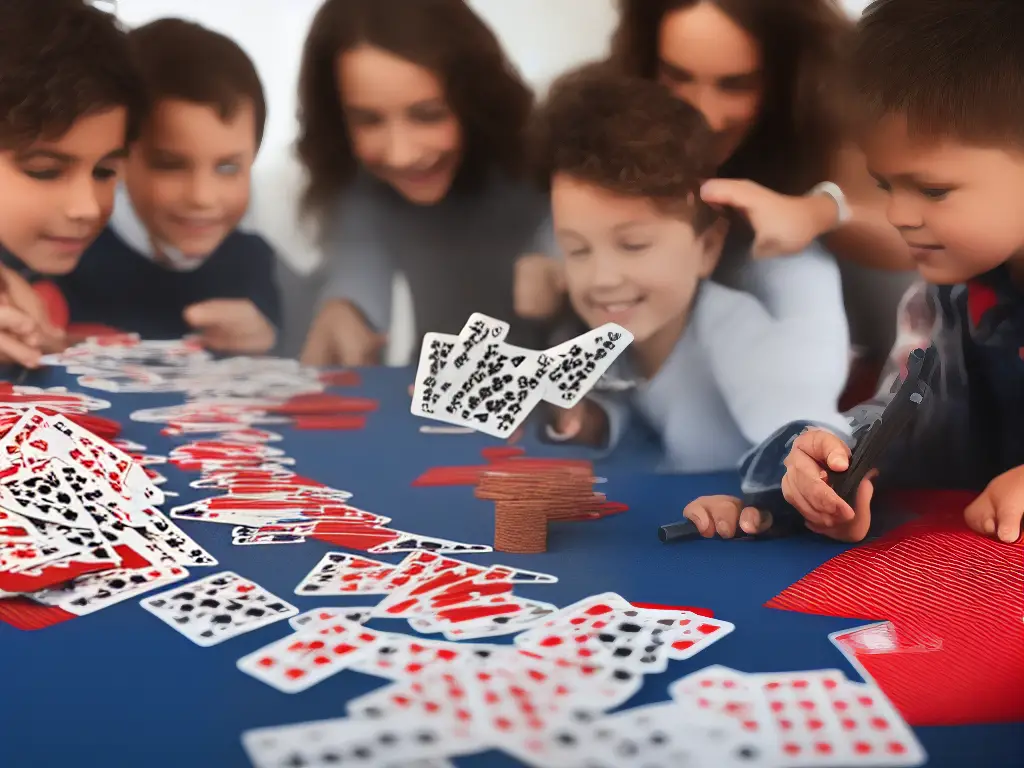
Uno
When it comes to card games for kids, Uno is definitely at the top of the list. With its distinctive deck of colorful cards, Uno has been a family favorite since its creation in 1971. An ideal combination of simplicity, strategy, and excitement, Uno is a great choice for an engaging and enjoyable card game for kids of all ages.
Uno is a unique card game that primarily involves getting rid of all the cards in your hand before your opponents can. Its unique deck features colorful numbered cards in four suits – red, blue, green, and yellow – as well as action cards and wild cards, which add twists and turns to the gameplay.
The game begins with each player being dealt seven cards, and the remaining deck is placed face down in the center of the table as the draw pile. Then turn the top card of the draw pile over to start a discard pile.
Players take turns to match the top card on the discard pile by either number, color, or symbol. For example, if the top card is a red 7, the next player can play a red card, a 7 of any color, or any action card with the same symbol. If a player cannot play a suitable card, they must draw a card from the draw pile. If the drawn card can be played, it can be discarded immediately; otherwise, the turn moves on to the next player.
Action cards add extra fun and strategy to the game. They include:
- Skip – Skips the next player’s turn.
- Reverse – Changes the direction of play.
- Draw Two – Forces the next player to draw two cards and forfeits their turn.
- Wild – Can be played on any card and allows the player to change the current color.
- Wild Draw Four – Acts as a Wild card but forces the next player to draw four cards and forfeit their turn.
When a player is down to their last card, they must say, “Uno!” If they fail to do so and another player catches them before the next player begins their turn, they must draw two additional cards as a penalty.
Apart from being a fun and engaging game, Uno offers several benefits that help in the development of essential skills in children:
- Strategic Thinking – Uno teaches kids to think strategically, as they need to consider the cards they have and how best to play them to their advantage.
- Quick Decision Making – Players need to make quick decisions based on the ever-changing landscape of the game, helping children build their ability to think on their feet.
- Social Skills – Playing Uno promotes social interaction as kids engage in light-hearted competition, involving communication, taking turns, and displaying sportsmanship.
- Basic Math Skills – Uno helps children practice their basic math skills as they recognize and match numbers on the cards during gameplay.
Uno is a fantastic card game for kids that’s not only enjoyable but also helps develop essential life skills. The game’s easy-to-learn rules and fast-paced gameplay make it perfect for family game nights, parties, or even a quick game with friends. Don’t miss out on the fun and bonding experience that Uno can offer!
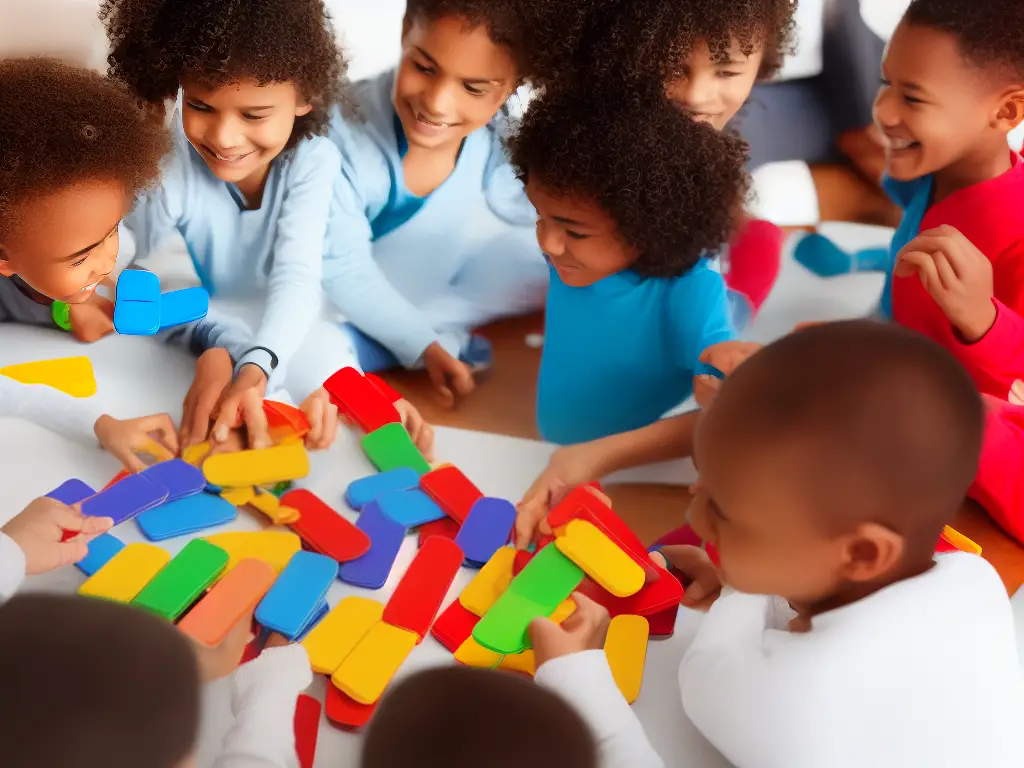
So, there you have it – a collection of enjoyable and engaging card games perfect for keeping kids entertained, while also aiding in their cognitive development. By introducing these games in your family game nights or playdates, you can help create lasting memories, strengthen relationships, and foster essential skills. Get ready to shuffle, deal, and laugh your way through these amazing card games that are sure to become your child’s favorites in no time.
